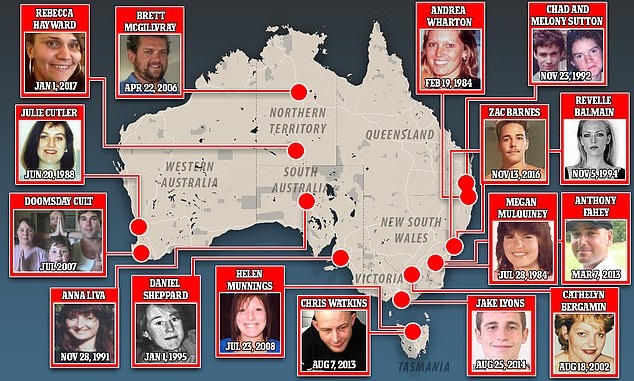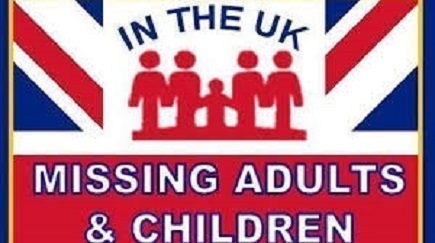Missing
Austin Eugene Bryant




Austin, approximately 1999 (Age at the time of disappearance: three, approximately four years before his disappearance); Age when reported missing: 18 (approximately 2014); Edward Eugene Bryant; Linda Bryant
Date and time person was reported missing : 01/01/2003
Missing location (approx) :
Monument, Colorado
Missing classification : Endangered Missing
Gender : Male
Ethnicity :
White
DOB : 01/29/1996 (25)
Age at the time of disappearance: 7 years old
Height / Weight : 4'2, 55 pounds
Distinguishing characteristics, birthmarks, tattoos
: Caucasian male. Blond hair, blue eyes. Austin's birth name is Austen Jean Bennett. He wears eyeglasses with thick lenses.
Information on the case from local sources, may or may not be correct : Austin and his biological brother, Edward, went to live in the home of Edward Eugene Bryant and Linda Kay Bryant in the late 1990s. Originally foster children, they were adopted by the Bryants in March 2000. Austin was four years old at the time and Edward was seven. They were considered special needs children and the Bryants collected more than $1,700 a month from the El Paso County Department of Human Services for their care.
The couple adopted nine children in all, including a younger biological brother of Austin and Edward, and Linda had one biological daughter who also took in foster children. Photos of Linda and Edward Eugene are posted with this case summary. They lived in the 18000 block of Granite Circle in Monument, Colorado between 1999 and 2005.
In January 2011, authorities were notified that Austin was missing and hadn't been seen since sometime between 2003 and 2005. When they investigated they discovered Edward was also unaccounted for and was last seen in 2001. The other children in the family had been forbidden to talk about them.
When questioned, Linda at first claimed the children were living with her, then claimed they had gone to visit their biological mother in Oklahoma, then admitted they hadn't lived with her in years.
Linda and Edward Eugene stated both boys had run away from home, but they gave different information as to when; Linda said they both ran away in May 2003, and Edward Eugene said Edward ran away in 2001 and Austin in 2005. Their adoptive parents never reported them missing.
Someone billed Medicaid on Edward's behalf in December 2003, after he is supposed to have vanished. Investigators determined that Austin was enrolled at Monument Academy Charter School until August 2003, when he was withdrawn, supposedly to be homeschooled. They could find no school records or medical records for either Edward or Austin after 2003.
Once the children's adoptions were completed, the state was no longer allowed to send social workers to check up on them, making their absence easier to conceal. Linda made active efforts to make it look like the boys were still living with her: for example, she printed photographs of other children off the internet, displayed them in her home and claimed they were pictures of Austin and Edward.
James Bryant, the boys' adoptive brother, and Ricky and Bryan Pennington, both foster children of Linda's daughter, were the ones who came forward about Austin's disappearance in early 2011. According to James, Austin was beaten, denied food several times a week, and locked in the garAge at the time of disappearance: for days at a time.
Bryan said Austin had told him he'd been locked in a trunk and shocked with a taser, although Bryan admitted he hadn't actually witnessed these incidents himself. He said he had seen Austin wrapped up in blankets so tightly that he couldn't move. James said he believed his adoptive parents might have killed Austin. He said he had never met Edward and had been told the boy had been sent to relatives in Arizona.
The Bryants moved to Texas in 2005 and then separated sometime afterwards. They filed for bankruptcy in 2007 and listed $126,125 in adoption benefits as part of their income. They listed eight children, including Austin and Edward, as dependents. They still had five children in their care by 2011; a sixth is in prison and the seventh, James, is a soldier stationed in Kentucky.
In February 2011, the Bryants were arrested and charged with multiple counts of theft, conspiracy, forgery and attempting to influence a public official. They had collected approximately $175,000 in benefit payments for the children's care after the children were no longer living in their home.
Edward Eugene said he had no knowledge of the family's receiving benefits for the children. Linda admitted she had deliberately covered up their disappearances in order to keep the payments coming.
Linda faced 148 felony counts and Edward Eugene was charged with 13 felonies. None of the charges are related to the actual disappearance of the children or the alleged abuse of them. Linda and Edward Eugene have denied having abused or killed either Edward or Austin. Their other five minor children are now wards of the state of Texas.
In January 2012, Linda pleaded guilty to 54 felonies: four counts of theft, two counts of conspiracy to commit theft and 48 counts of attempting to influence a public servant. In March, she was sentenced to 42 years in prison. In April, Edward Eugene pleaded guilty to five similar felony charges; nineteen other counts were dismissed. He was sentenced to 30 years in prison.
Extensive searches in Colorado have turned up no indication of Austin or Edward's whereabouts, and authorities fear they may be dead. Their cases remain unsolved.
Other information and links : ncy
El Paso County Sheriff's Office
719-390-5555
September 2021 updates and sources
Missing Children�s Statistics
One Missing Child Is One Too Many
The lack of a common definition of �missing child,� and a common response to the issue, results in few reliable statistics on the scope of the problem around the world.
Even with this challenge, we know that:
In Australia, an estimated 20,000 children are reported missing every year.
Australian Federal Police, National Coordination Centre.
In Canada, an estimated 45,288 children are reported missing each year.
Government of Canada, Canada�s Missing � 2015 Fast Fact Sheet.
In Germany, an estimated 100,000 children are reported missing each year.
Initiative Vermisste Kinder.
In India, an estimated 96,000 children go missing each year.
Bachpan Bachao Andolan, Missing Children of India.
In Jamaica, an estimated 1,984 children were reporting missing in 2015.
Jamaica�s Office of Children�s Registry
In Russia, an estimated 45,000 children were reported missing in 2015.
Interview with Pavel Astakhov MIA �Russia Today�, Apr. 4, 2016.
In Spain, an estimated 20,000 children are reported missing every year.
Spain Joins EU Hotline for Missing Children, Sep. 22, 2010.
In the United Kingdom, an estimated 112,853 children are reported missing every year.
National Crime Agency, UK Missing Persons Bureau.
In the United States, an estimated 460,000 children are reported missing every year.
Federal Bureau of Investigation, Missing Children�s Statistics
One Missing Child Is One Too Many
The lack of a common definition of �missing child,� and a common response to the issue, results in few reliable statistics on the scope of the problem around the world.
Even with this challenge, we know that:
In Australia, an estimated 20,000 children are reported missing every year.
Australian Federal Police, National Coordination Centre.
In Canada, an estimated 45,288 children are reported missing each year.
Government of Canada, Canada�s Missing � 2015 Fast Fact Sheet.
In Germany, an estimated 100,000 children are reported missing each year.
Initiative Vermisste Kinder.
In India, an estimated 96,000 children go missing each year.
Bachpan Bachao Andolan, Missing Children of India.
In Jamaica, an estimated 1,984 children were reporting missing in 2015.
Jamaica�s Office of Children�s Registry
In Russia, an estimated 45,000 children were reported missing in 2015.
Interview with Pavel Astakhov MIA �Russia Today�, Apr. 4, 2016.
In Spain, an estimated 20,000 children are reported missing every year.
Spain Joins EU Hotline for Missing Children, Sep. 22, 2010.
In the United Kingdom, an estimated 112,853 children are reported missing every year.
National Crime Agency, UK Missing Persons Bureau.
In the United States, an estimated 460,000 children are reported missing every year.
Federal Bureau of Investigation, NCIC.
This, however, is only a snapshot of the problem. In many countries, statistics on missing children are not even available; and, unfortunately, even available statistics may be inaccurate due to: under-reporting/under-recognition; inflation; incorrect database entry of case information; and deletion of records once a case is closed.
The lack of numbers, and the discrepancy in the numbers that do exist, is one of the key reasons why ICMEC developed and advocates for the Model Missing Child Framework, which assists countries with building strong, well-rounded national responses, and facilitates more efficient investigations, management, and resolution of missing children cases.
We firmly believe that one missing child is one too many, and we are committed to improving the global understanding of and response to missing and abducted children.
Here is a look at missing children in the United States. There are several different types of missing children: runaways, family abductions, lost or �thrown away� and non-family abductions. Advances in technology, communications through public alerts and greater cooperation from law enforcement have facilitated the recovery process.
Statistics
According to the FBI�s National Crime Information Center (NCIC) Missing Person File, there are 89,637 active missing person records, of which juveniles under the age of 18 account for 30,396 (34%) of the records. (as of December 31, 2020)
AMBER Alert
�AMBER (America�s Missing: Broadcast Emergency Response) Alerts are emergency messages broadcast when a law enforcement agency determines that a child has been abducted and is in imminent danger. The broadcasts include information about the child and the abductor, including physical descriptions as well as information about the abductor�s vehicle - which could lead to the child�s recovery.�
The AMBER Alert system began in 1996 and was named in honor of Amber Hagerman, a 9-year-old who was abducted in Arlington, Texas, and murdered.
All 50 states, the District of Columbia, Puerto Rico, and the US Virgin Islands have AMBER Alert plans in place to help find missing children in danger.
As of December 2020, the AMBER Alert program has been credited with the safe recovery of 1029 children..
This, however, is only a snapshot of the problem. In many countries, statistics on missing children are not even available; and, unfortunately, even available statistics may be inaccurate due to: under-reporting/under-recognition; inflation; incorrect database entry of case information; and deletion of records once a case is closed.
The lack of numbers, and the discrepancy in the numbers that do exist, is one of the key reasons why ICMEC developed and advocates for the Model Missing Child Framework, which assists countries with building strong, well-rounded national responses, and facilitates more efficient investigations, management, and resolution of missing children cases.
We firmly believe that one missing child is one too many, and we are committed to improving the global understanding of and response to missing and abducted children.
Here is a look at missing children in the United States. There are several different types of missing children: runaways, family abductions, lost or �thrown away� and non-family abductions. Advances in technology, communications through public alerts and greater cooperation from law enforcement have facilitated the recovery process.
Statistics
According to the FBI�s National Crime Information Center (Missing Children�s Statistics
One Missing Child Is One Too Many
The lack of a common definition of �missing child,� and a common response to the issue, results in few reliable statistics on the scope of the problem around the world.
Even with this challenge, we know that:
In Australia, an estimated 20,000 children are reported missing every year.
Australian Federal Police, National Coordination Centre.
In Canada, an estimated 45,288 children are reported missing each year.
Government of Canada, Canada�s Missing � 2015 Fast Fact Sheet.
In Germany, an estimated 100,000 children are reported missing each year.
Initiative Vermisste Kinder.
In India, an estimated 96,000 children go missing each year.
Bachpan Bachao Andolan, Missing Children of India.
In Jamaica, an estimated 1,984 children were reporting missing in 2015.
Jamaica�s Office of Children�s Registry
In Russia, an estimated 45,000 children were reported missing in 2015.
Interview with Pavel Astakhov MIA �Russia Today�, Apr. 4, 2016.
In Spain, an estimated 20,000 children are reported missing every year.
Spain Joins EU Hotline for Missing Children, Sep. 22, 2010.
In the United Kingdom, an estimated 112,853 children are reported missing every year.
National Crime Agency, UK Missing Persons Bureau.
In the United States, an estimated 460,000 children are reported missing every year.
Federal Bureau of Investigation, NCIC.
This, however, is only a snapshot of the problem. In many countries, statistics on missing children are not even available; and, unfortunately, even available statistics may be inaccurate due to: under-reporting/under-recognition; inflation; incorrect database entry of case information; and deletion of records once a case is closed.
The lack of numbers, and the discrepancy in the numbers that do exist, is one of the key reasons why ICMEC developed and advocates for the Model Missing Child Framework, which assists countries with building strong, well-rounded national responses, and facilitates more efficient investigations, management, and resolution of missing children cases.
We firmly believe that one missing child is one too many, and we are committed to improving the global understanding of and response to missing and abducted children.
Here is a look at missing children in the United States. There are several different types of missing children: runaways, family abductions, lost or �thrown away� and non-family abductions. Advances in technology, communications through public alerts and greater cooperation from law enforcement have facilitated the recovery process.
Statistics
According to the FBI�s National Crime Information Center (NCIC) Missing Person File, there are 89,637 active missing person records, of which juveniles under the age of 18 account for 30,396 (34%) of the records. (as of December 31, 2020)
AMBER Alert
�AMBER (America�s Missing: Broadcast Emergency Response) Alerts are emergency messages broadcast when a law enforcement agency determines that a child has been abducted and is in imminent danger. The broadcasts include information about the child and the abductor, including physical descriptions as well as information about the abductor�s vehicle - which could lead to the child�s recovery.�
The AMBER Alert system began in 1996 and was named in honor of Amber Hagerman, a 9-year-old who was abducted in Arlington, Texas, and murdered.
All 50 states, the District of Columbia, Puerto Rico, and the US Virgin Islands have AMBER Alert plans in place to help find missing children in danger.
As of December 2020, the AMBER Alert program has been credited with the safe recovery of 1029 children.) Missing Person File, there are 89,637 active missing person records, of which juveniles under the age of 18 account for 30,396 (34%) of the records. (as of December 31, 2020)
AMBER Alert
�AMBER (America�s Missing: Broadcast Emergency Response) Alerts are emergency messages broadcast when a law enforcement agency determines that a child has been abducted and is in imminent danger. The broadcasts include information about the child and the abductor, including physical descriptions as well as information about the abductor�s vehicle - which could lead to the child�s recovery.�
The AMBER Alert system began in 1996 and was named in honor of Amber Hagerman, a 9-year-old who was abducted in Arlington, Texas, and murdered.
All 50 states, the District of Columbia, Puerto Rico, and the US Virgin Islands have AMBER Alert plans in place to help find missing children in danger.
As of December 2020, the AMBER Alert program has been credited with the safe recovery of 1029 children.
Interactive Missing Person Search Map




























